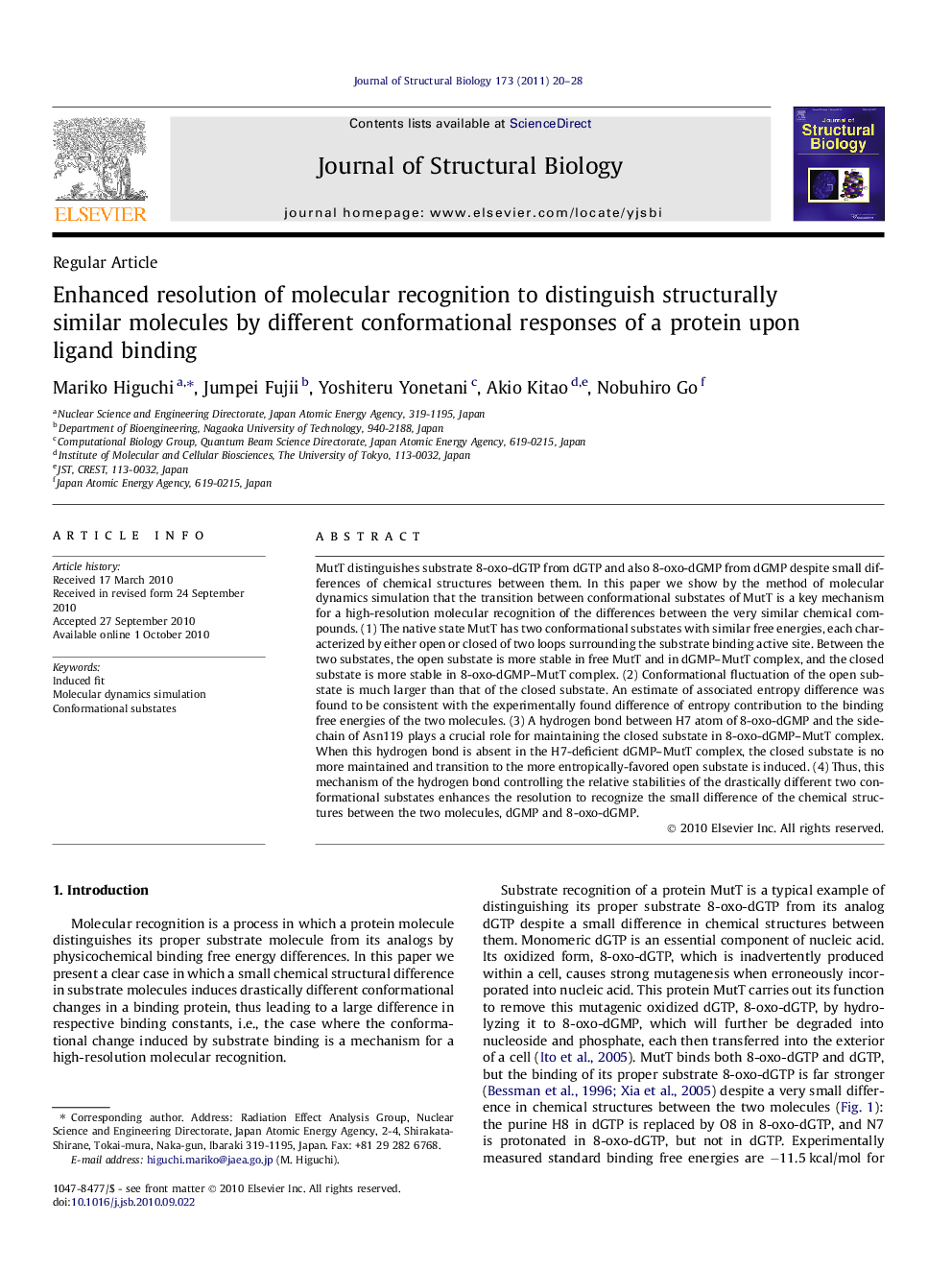| Article ID | Journal | Published Year | Pages | File Type |
|---|---|---|---|---|
| 2828765 | Journal of Structural Biology | 2011 | 9 Pages |
MutT distinguishes substrate 8-oxo-dGTP from dGTP and also 8-oxo-dGMP from dGMP despite small differences of chemical structures between them. In this paper we show by the method of molecular dynamics simulation that the transition between conformational substates of MutT is a key mechanism for a high-resolution molecular recognition of the differences between the very similar chemical compounds. (1) The native state MutT has two conformational substates with similar free energies, each characterized by either open or closed of two loops surrounding the substrate binding active site. Between the two substates, the open substate is more stable in free MutT and in dGMP–MutT complex, and the closed substate is more stable in 8-oxo-dGMP–MutT complex. (2) Conformational fluctuation of the open substate is much larger than that of the closed substate. An estimate of associated entropy difference was found to be consistent with the experimentally found difference of entropy contribution to the binding free energies of the two molecules. (3) A hydrogen bond between H7 atom of 8-oxo-dGMP and the sidechain of Asn119 plays a crucial role for maintaining the closed substate in 8-oxo-dGMP–MutT complex. When this hydrogen bond is absent in the H7-deficient dGMP–MutT complex, the closed substate is no more maintained and transition to the more entropically-favored open substate is induced. (4) Thus, this mechanism of the hydrogen bond controlling the relative stabilities of the drastically different two conformational substates enhances the resolution to recognize the small difference of the chemical structures between the two molecules, dGMP and 8-oxo-dGMP.
